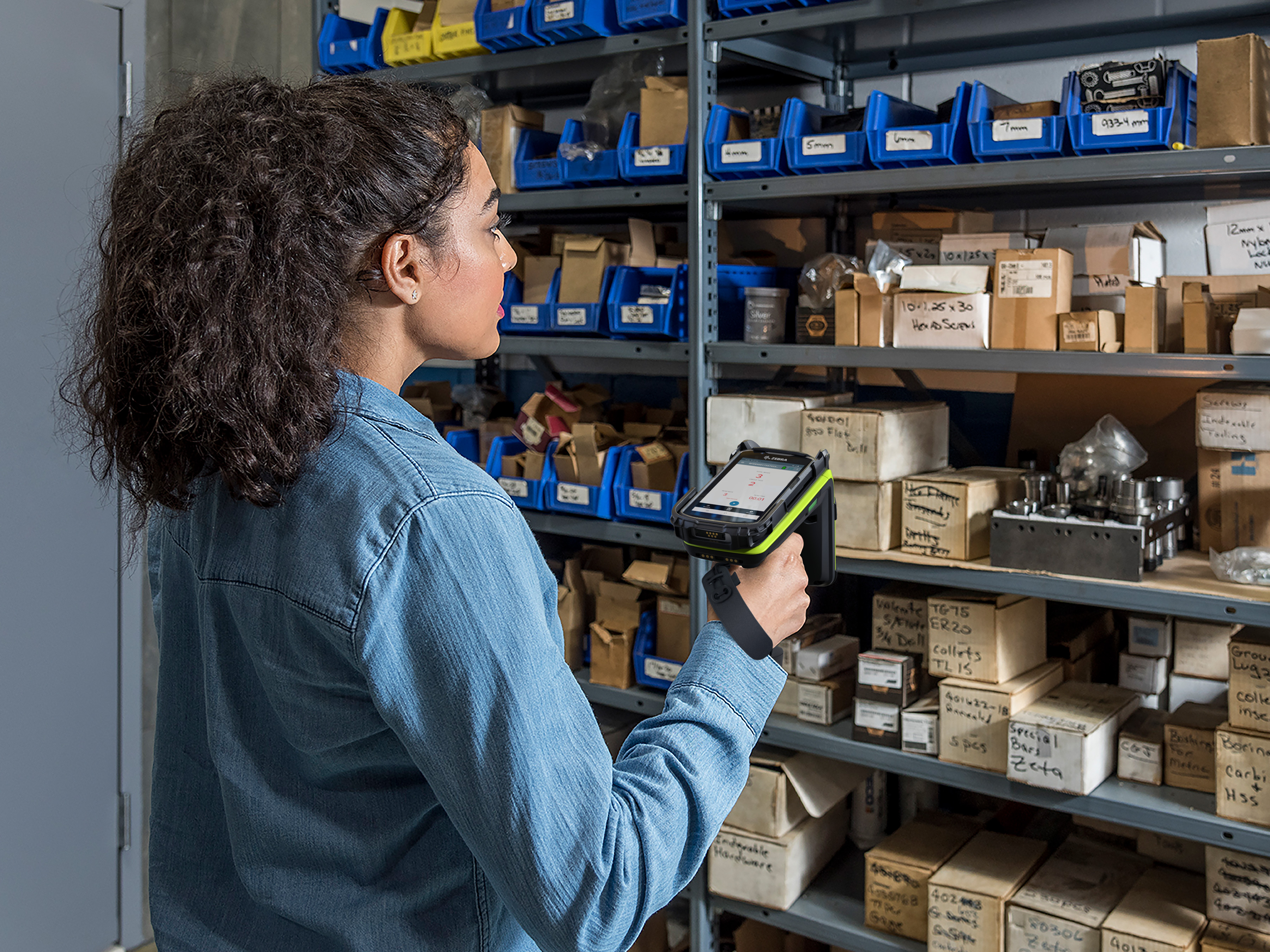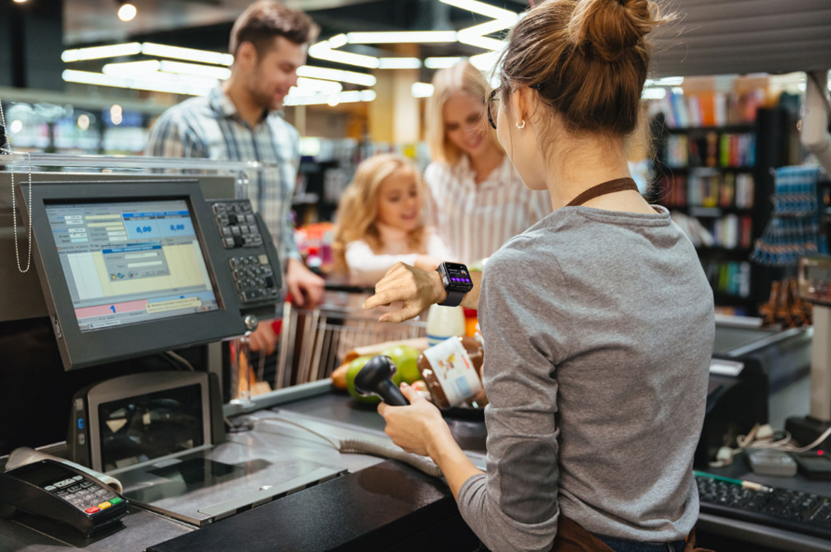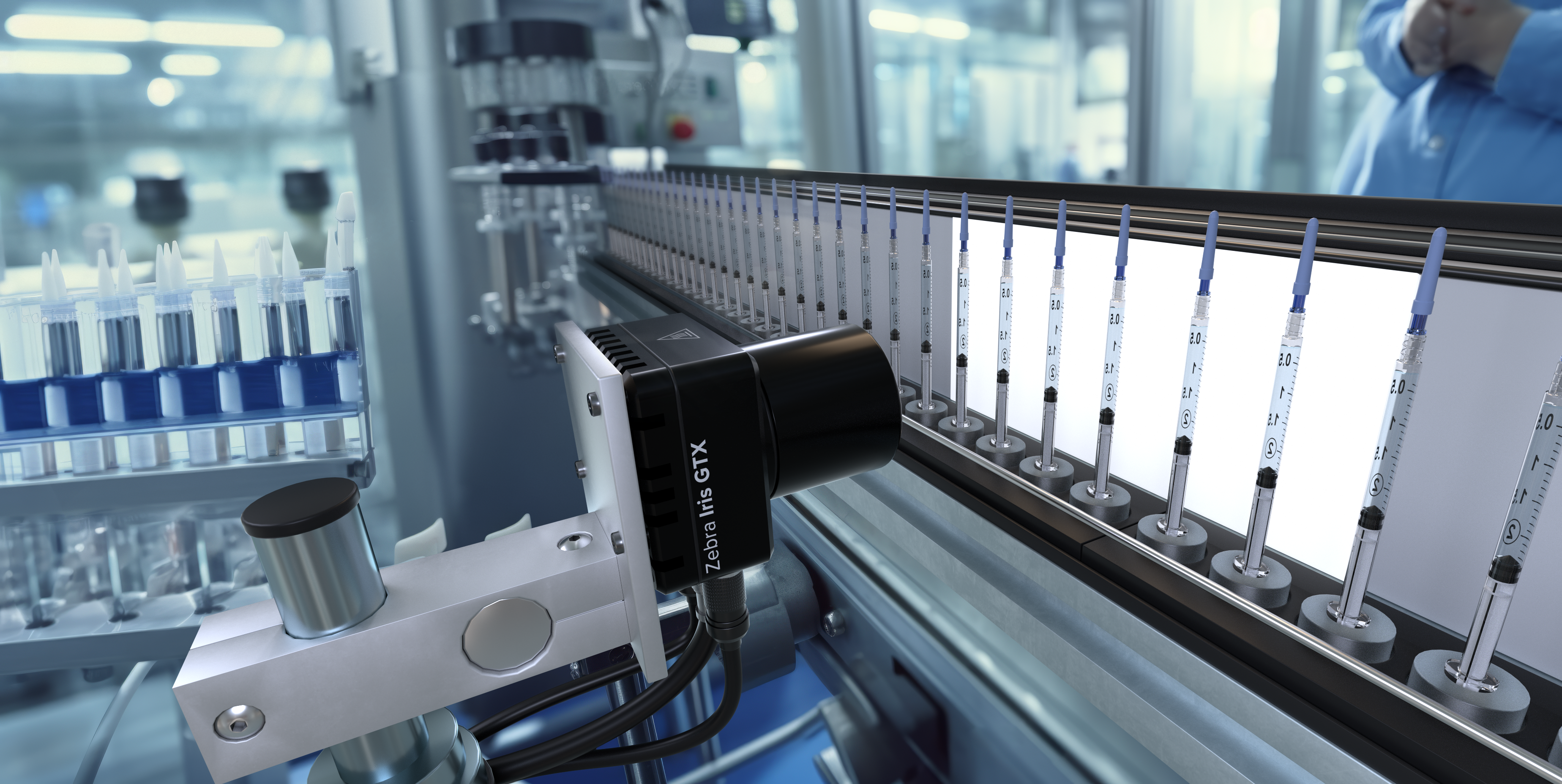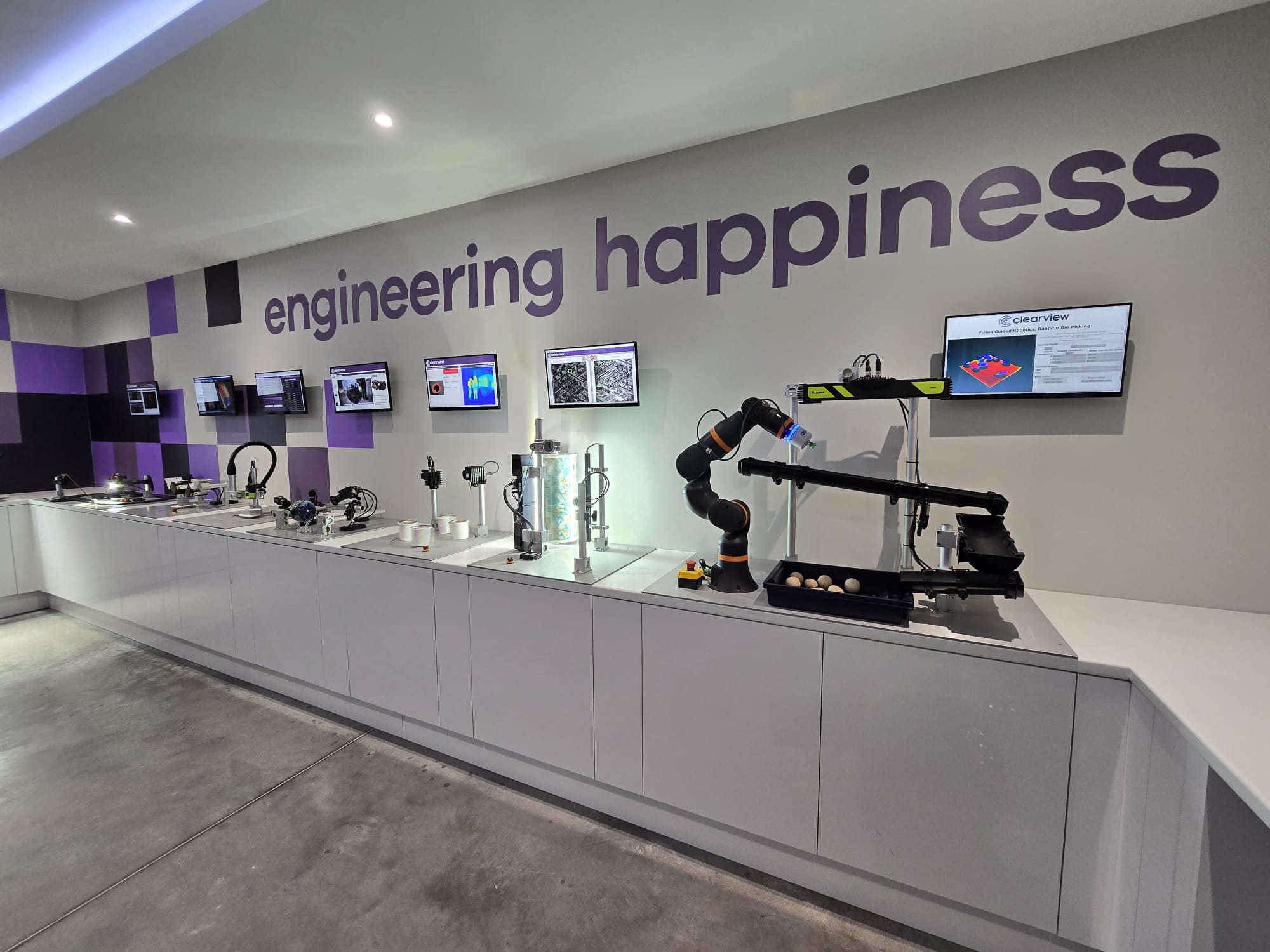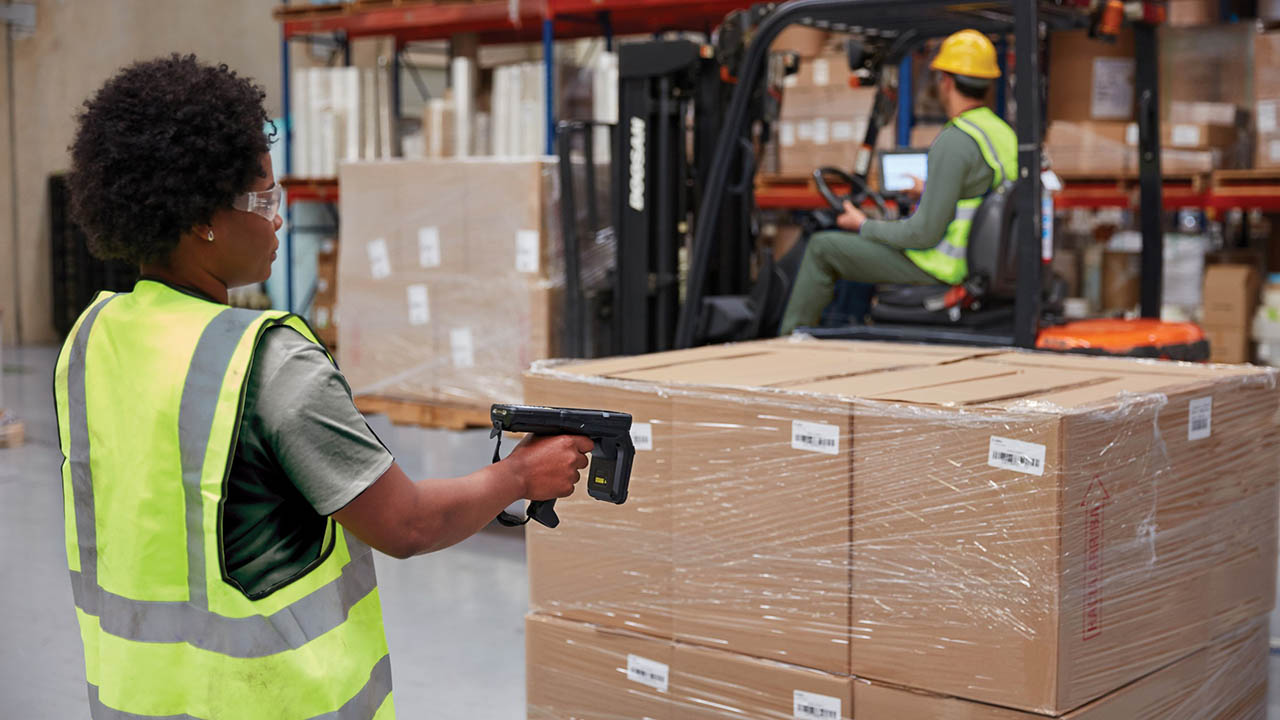Transform retail operations with Zebra’s retail technology solutions, featuring hardware and software for improving inventory management and empowering teams.
Streamline operations with Zebra’s healthcare technology solutions, featuring hardware and software to improve staff collaboration and optimize workflows.
Enhance processes with Zebra’s manufacturing technology solutions, featuring hardware and software for automation, data analysis, and factory connectivity.
Zebra’s transportation and logistics technology solutions feature hardware and software for enhancing route planning, visibility, and automating processes.
Learn how Zebra's public sector technology solutions empower state and local governments to improve efficiency with asset tracking and data capture devices.
Zebra's hospitality technology solutions equip your hotel and restaurant staff to deliver superior customer and guest service through inventory tracking and more.
Zebra's market-leading solutions and products improve customer satisfaction with a lower cost per interaction by keeping service representatives connected with colleagues, customers, management and the tools they use to satisfy customers across the supply chain.
Empower your field workers with purpose-driven mobile technology solutions to help them capture and share critical data in any environment.
Zebra's range of Banking technology solutions enables banks to minimize costs and to increase revenue throughout their branch network. Learn more.
Zebra's range of mobile computers equip your workforce with the devices they need from handhelds and tablets to wearables and vehicle-mounted computers.
Zebra's desktop, mobile, industrial, and portable printers for barcode labels, receipts, RFID tags and cards give you smarter ways to track and manage assets.
Zebra's 1D and 2D corded and cordless barcode scanners anticipate any scanning challenge in a variety of environments, whether retail, healthcare, T&L or manufacturing.
Zebra's extensive range of RAIN RFID readers, antennas, and printers give you consistent and accurate tracking.
Choose Zebra's reliable barcode, RFID and card supplies carefully selected to ensure high performance, print quality, durability and readability.
Zebra's location technologies provide real-time tracking for your organization to better manage and optimize your critical assets and create more efficient workflows.
Zebra's rugged tablets and 2-in-1 laptops are thin and lightweight, yet rugged to work wherever you do on familiar and easy-to-use Windows or Android OS.
With Zebra's family of fixed industrial scanners and machine vision technologies, you can tailor your solutions to your environment and applications.
Zebra’s line of kiosks can meet any self-service or digital signage need, from checking prices and stock on an in-aisle store kiosk to fully-featured kiosks that can be deployed on the wall, counter, desktop or floor in a retail store, hotel, airport check-in gate, physician’s office, local government office and more.
Adapt to market shifts, enhance worker productivity and secure long-term growth with AMRs. Deploy, redeploy and optimize autonomous mobile robots with ease.
Discover Zebra’s range of accessories from chargers, communication cables to cases to help you customize your mobile device for optimal efficiency.
Zebra's environmental sensors monitor temperature-sensitive products, offering data insights on environmental conditions across industry applications.
Enhance frontline operations with Zebra’s AI software solutions, which optimize workflows, streamline processes, and simplify tasks for improved business outcomes.
Zebra Workcloud, enterprise software solutions boost efficiency, cut costs, improve inventory management, simplify communication and optimize resources.
Keep labor costs low, your talent happy and your organization compliant. Create an agile operation that can navigate unexpected schedule changes and customer demand to drive sales, satisfy customers and improve your bottom line.
Drive successful enterprise collaboration with prioritized task notifications and improved communication capabilities for easier team collaboration.
Get full visibility of your inventory and automatically pinpoint leaks across all channels.
Reduce uncertainty when you anticipate market volatility. Predict, plan and stay agile to align inventory with shifting demand.
Drive down costs while driving up employee, security, and network performance with software designed to enhance Zebra's wireless infrastructure and mobile solutions.
Explore Zebra’s printer software to integrate, manage and monitor printers easily, maximizing IT resources and minimizing down time.
Make the most of every stage of your scanning journey from deployment to optimization. Zebra's barcode scanner software lets you keep devices current and adapt them to your business needs for a stronger ROI across the full lifecycle.
RFID development, demonstration and production software and utilities help you build and manage your RFID deployments more efficiently.
RFID development, demonstration and production software and utilities help you build and manage your RFID deployments more efficiently.
Zebra DNA is the industry’s broadest suite of enterprise software that delivers an ideal experience for all during the entire lifetime of every Zebra device.
Advance your digital transformation and execute your strategic plans with the help of the right location and tracking technology.
Boost warehouse and manufacturing operations with Symmetry, an AMR software for fleet management of Autonomous Mobile Robots and streamlined automation workflows.
The Zebra Aurora suite of machine vision software enables users to solve their track-and-trace, vision inspection and industrial automation needs.
Zebra Aurora Focus brings a new level of simplicity to controlling enterprise-wide manufacturing and logistics automation solutions. With this powerful interface, it’s easy to set up, deploy and run Zebra’s Fixed Industrial Scanners and Machine Vision Smart Cameras, eliminating the need for different tools and reducing training and deployment time.
Aurora Imaging Library™, formerly Matrox Imaging Library, machine-vision software development kit (SDK) has a deep collection of tools for image capture, processing, analysis, annotation, display, and archiving. Code-level customization starts here.
Aurora Design Assistant™, formerly Matrox Design Assistant, integrated development environment (IDE) is a flowchart-based platform for building machine vision applications, with templates to speed up development and bring solutions online quicker.
Designed for experienced programmers proficient in vision applications, Aurora Vision Library provides the same sophisticated functionality as our Aurora Vision Studio software but presented in programming language.
Aurora Vision Studio, an image processing software for machine & computer vision engineers, allows quick creation, integration & monitoring of powerful OEM vision applications.
Adding innovative tech is critical to your success, but it can be complex and disruptive. Professional Services help you accelerate adoption, and maximize productivity without affecting your workflows, business processes and finances.
Zebra's Managed Service delivers worry-free device management to ensure ultimate uptime for your Zebra Mobile Computers and Printers via dedicated experts.
Find ways you can contact Zebra Technologies’ Support, including Email and Chat, ask a technical question or initiate a Repair Request.
Zebra's Circular Economy Program helps you manage today’s challenges and plan for tomorrow with smart solutions that are good for your budget and the environment.
The Zebra Knowledge Center provides learning expertise that can be tailored to meet the specific needs of your environment.
Zebra has a wide variety of courses to train you and your staff, ranging from scheduled sessions to remote offerings as well as custom tailored to your specific needs.
Build your reputation with Zebra's certification offerings. Zebra offers a variety of options that can help you progress your career path forward.
Build your reputation with Zebra's certification offerings. Zebra offers a variety of options that can help you progress your career path forward.
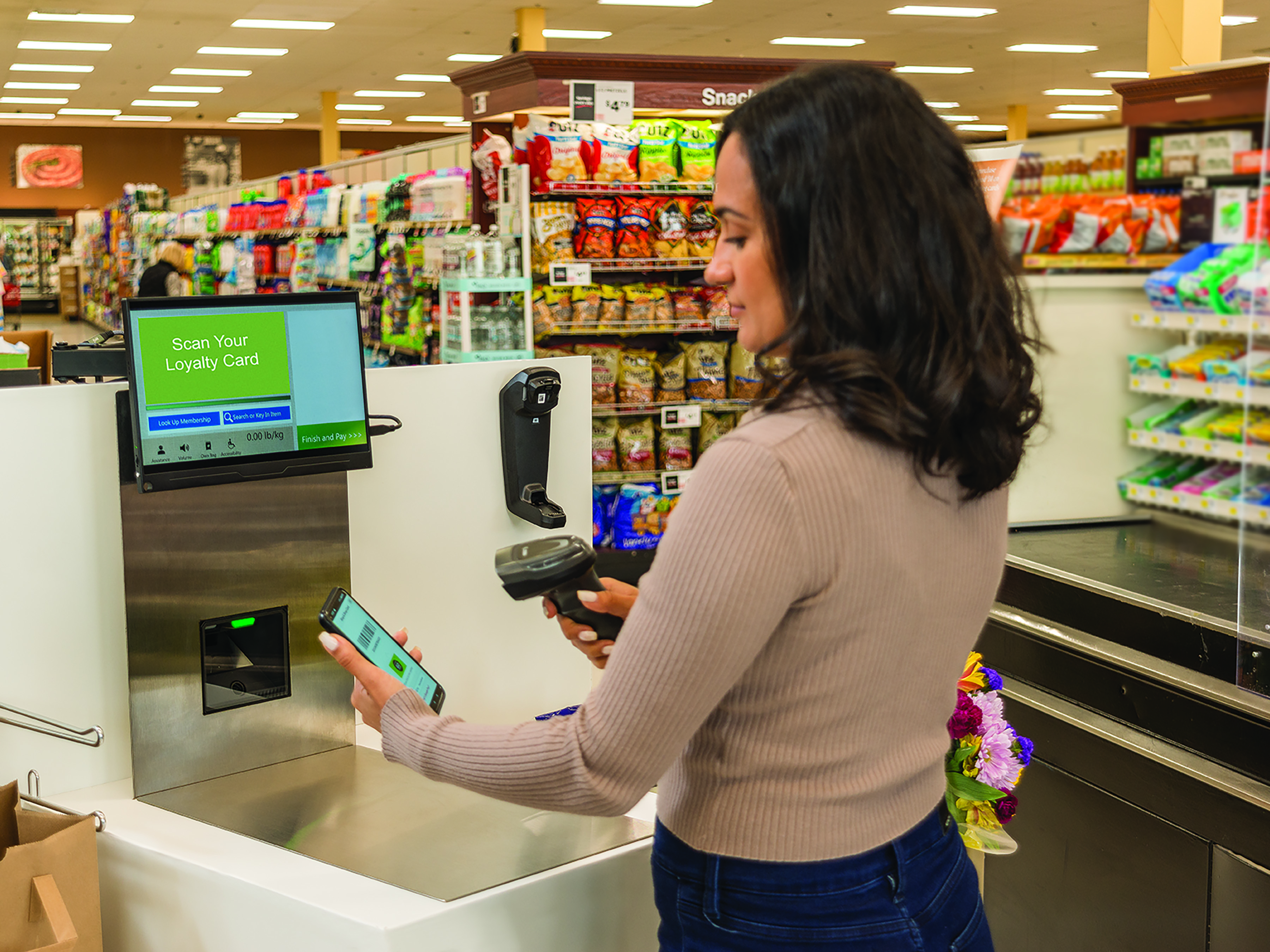
5 Tips to Prevent Shrinkage in the Age of Self-Checkout
Editor’s Note: This post was originally published in September 2019. It was updated with new insights and perspectives in August 2024.
Five years ago, my then-colleague and retail pundit Peter Ward explained why he was such an advocate of self-service technologies at a time when scan-and-go and self-checkout (SCO) were really starting to capture retailers’ attention (and shoppers’ interest) around the world. He said he had ‘seen them have a dramatic effect with our retail customers in terms of improved sales, customer service and satisfaction, as well as increasing associate productivity in stores of the earliest adopters which.
He asserted that these are probably the reasons why scan-and-go and self-checkout systems had been ‘hitting their stride’ in Europe for over a decade (even though the rest of the world had just started testing them out).
I agreed with Peter then and still do now. In fact, the need for self-service has never been stronger.
Shoppers want convenience. They told us point blank in Zebra’s 16th Annual Global Shopper Study that they would prefer to pay at a self-checkout register/kiosk or on their mobile device using an app or digitally stored credit card.
So, you should be fully embracing all technologies, store designs, etc. that facilitate that self-serve experience. (My colleague Graeme Simons spoke about using self-service options to ‘win at the point of sale’ in this post in case you missed it.)
That said, there are a few things Peter suggested five years ago that I still advise retailers on today when they tell me they want to get the most from their self-service offerings, whether scan-and-go or self-checkout:
- Create project groups involving HR teams, loss prevention, marketing and operations.
- Secure senior level sponsorship.
- Solicit honest feedback from associates and shoppers about what they want or don’t want – and do what it takes to accommodate the user experience (UX) they define for you.
- Ask shoppers how they want to shop.
- Make staff available to assist the transition to self-service solutions.
Once the technology (and the UX it supports) is genuinely supported by the business and confirmed as valuable to associates and customers , key performance indicators (KPIs) can be achieved – or exceeded.
However, as Peter noted in one of his commentaries in 2019, you or someone in your project group may still be weighing the risks versus benefits of offering the shop-and-scan/scan-and-go experience in your stores even after understanding demand and the payoff.
On the one hand, SCO options can move customers out the door faster, providing the fast, frictionless experience they expect. On the other hand, you may fear that speedy, self-managed checkout experience could lead to shrinkage – either from a customer accidentally or intentionally not scanning an item. Perhaps this has even been a suspected issue in your stores. But rest assured that, after 30 years of testing and refining self-service technologies and the processes that accompany them, my colleagues and I have identified more than a few strategies to help minimise losses.
There’s a fantastic list in this post from a well-respected loss prevention expert:
Why Your “Loss Prevention” Efforts Aren’t Working
And there are more recommended strategies in this consultative post:
Now Is Not the Time to Retreat from Self-Checkout (SCO)
I even provided my personal experience with certain strategies and systems that are quite effective for risk mitigation in this post a few weeks ago:
But no matter which direction you decide to take to balance your customers’ need for convenience and your need to protect profitability, these are the five things that you should always do if you want to want to see a measurable reduction in shrink at the POS, especially as more shoppers use self-service options:
1. Assess, then measure. You’re not going to be able to withhold self-service options forever, so figure out where they fit best within your stores. Typically, they’re embraced by larger-trolley customers in busy stores or those using supermarkets where footfall is high. It’s important to put KPIs in place too. Quantifying things like the desired number of people using systems, basket sizes and customer satisfaction – and tracking these indices over time to introduce tweaks and improvements – will help ensure success. You can also use other technologies or tactics to ensure the proper SKUs and weights are being input by customers for bulk or loose items like produce, such as camera technology that verifies the items going in the cart. You can also have someone quickly verify that the number of items in the cart matches the number of items on the digital receipt.
2. Educate shoppers: It’s interesting because Peter questioned some of the data in relation to shrinkage in 2019, and I continue to question it today. I also think many types of shrink are easily stoppable because I believe that most people are fundamentally honest and may be making genuine mistakes. For example, not many people realise that, when it comes to multi-buy offers, all products in the offer need to be scanned into their baskets. It’s also all too easy to forget to scan fresh produce. These types of ‘failed scans’ – which Peter and I both believe are more often than not honest mistakes – can count toward ‘theft’ in data. Some data will even count multiple scans of a single item, which operate in your favour, as shrinkage.
For these reasons, I believe it can cause problems when retailers assume that, on the one hand, people will gravitate to self-service options and, on the other, they will use them faultlessly. Customers need education. This is easily done with hints and tips displayed on the scanning device, leaflets and poster drops in-store – and by training associates. I’d also advocate having days when brand ambassadors visit stores to promote the technology, to walk around with customers and literally talk them through how it works. It can also be hugely advantageous to have ‘ambassador associates’ as part of your day-to-day store teams to assist customers. In short, when it comes to self-service, it’s time to educate to accumulate.
3. Integrate your loyalty scheme: The most successful scan-and-go systems use a loyalty card. This requires a shopper to scan their loyalty card to enable a mobile device to start a cart and connect offers. This, along with the fact that the retailer will hold other information about the identity of the shopper – for example home address and debit or credit card details – acts as a subtle psychological ‘honesty agent,’ with shrinkage levels falling substantially.
4. Spot check / rescans: When first used, it can feel a little unnatural for customers to shop in a truly frictionless way using self-scanning devices and automated payments. As part of the process, all shoppers should be made aware that they may randomly have their bags checked by a dedicated station near the exit. The critical thing here is to let customers know that at some time it is likely to happen – perhaps through in-store signage, alerts on self-scanning devices, notices on receipts and more. With clear communication in place, random rescans will soon become an expected and accepted part of the shopping experience. I would recommend that your most approachable associates with the best empathy skills manage such checking tasks, as they will be the best people to put customers at ease. You may also want to consider how technology can help. For example, when used in a SCO kiosk, bioptic scanners that have integrated cameras and artificial intelligence (AI) engines and can alert staff to suspicious scanning patterns or practices. (I go in depth about how these types of checkout systems work in this post.)
5. Be visible: This may sound obvious, but I have seen self-scanning devices tucked away in the strangest places. To encourage usage, Peter and I have both recommended consistently over the years that personal shopping devices are made easily accessible and placed close to the store entrance with clear signage such as ‘Speed through your shopping trip with these’. We’ve also seen retailers persuade shoppers to use devices for the first time through incentives such as money-off coupons – redeemable by the self-scanner – or free items such as hot drinks.
Now, these aren’t the only strategies. There are several other measures that you may want to take to build confidence self-service technologies and ensure they truly benefit your business.
My recommendation is to consult with a retail technology solution provider who can help you assess your current operational model and resources, as well as your loss detection/loss prevention strategies. Together, you can identify the best way to implement self-service within your environment.
If you want to speak with me or a Zebra retail specialist, you can leave a comment below or contact us here.
###
Editor’s Note: Want to learn more about Zebra’s self-service and POS technology, and the ready-to-go apps created for our devices by our partner community? Check out this resource page.

Mark Thomson
What’s happening in retail? How has the shift in shopping behavior impacted retailers around the world and will robots take over? Mark Thomson’s exploration of the global retail landscape helps retailers gain a focus on what’s real and what works when building a retail strategy in a digital world.
As Director of Retail Industry Solutions at Zebra Technologies, Mr. Thomson works closely with retailers and hospitality businesses to provide input on how to face the challenge of a new digital retail landscape, where customers are often more connected and informed than shop floor staff. Mr. Thomson helps retailers focus on developing a vision for their retail business that aims to improve customer experience and drive business efficiencies.
With over 27 years of customer-focused experience, Mr. Thomson has developed in-depth knowledge of the EMEA and global retail marketplace and regularly speaks at industry events throughout the EMEA region including World Retail Congress, Retail Middle East, RBTE and Euroshop. He has worked closely with retailers on the pain points of modern retail and explains how technology solutions can be an integral part of their business strategy to help them solve their real business challenges from supply chain to store.
Prior to joining Zebra, Mr. Thomson held senior roles in Financial Services and Hospitality businesses.
Zebra Developer Blog
Zebra Developer BlogZebra Developer Blog
Are you a Zebra Developer? Find more technical discussions on our Developer Portal blog.
Zebra Story Hub
Zebra Story HubZebra Story Hub
Looking for more expert insights? Visit the Zebra Story Hub for more interviews, news, and industry trend analysis.
Search the Blog
Search the BlogSearch the Blog
Use the below link to search all of our blog posts.
Most Recent
Legal Terms of Use Privacy Policy Supply Chain Transparency
ZEBRA and the stylized Zebra head are trademarks of Zebra Technologies Corp., registered in many jurisdictions worldwide. All other trademarks are the property of their respective owners. ©2025 Zebra Technologies Corp. and/or its affiliates.

